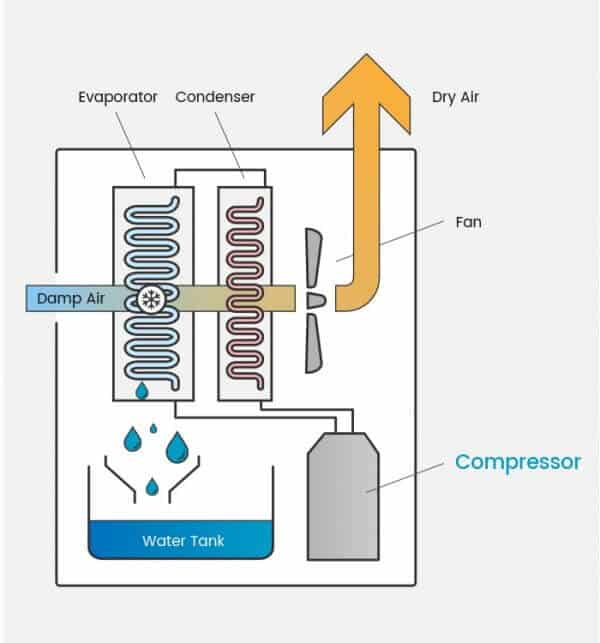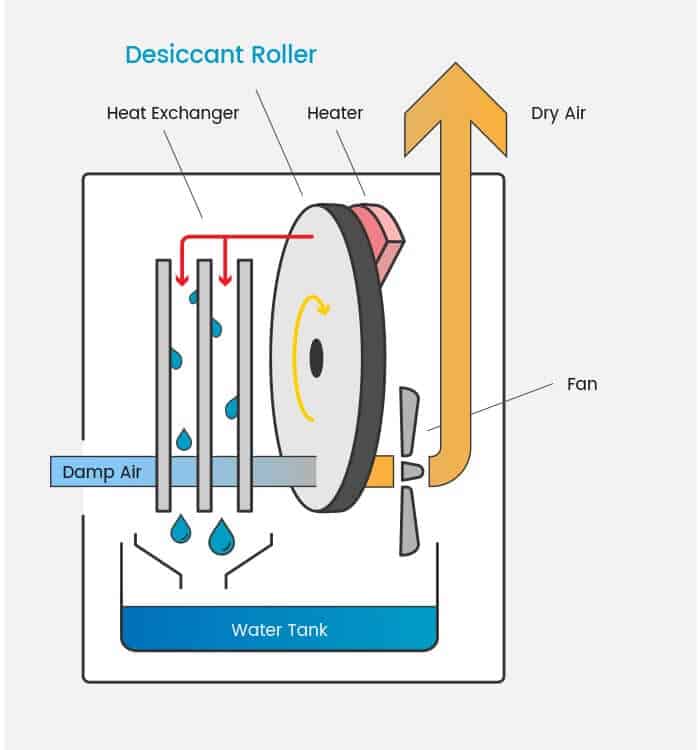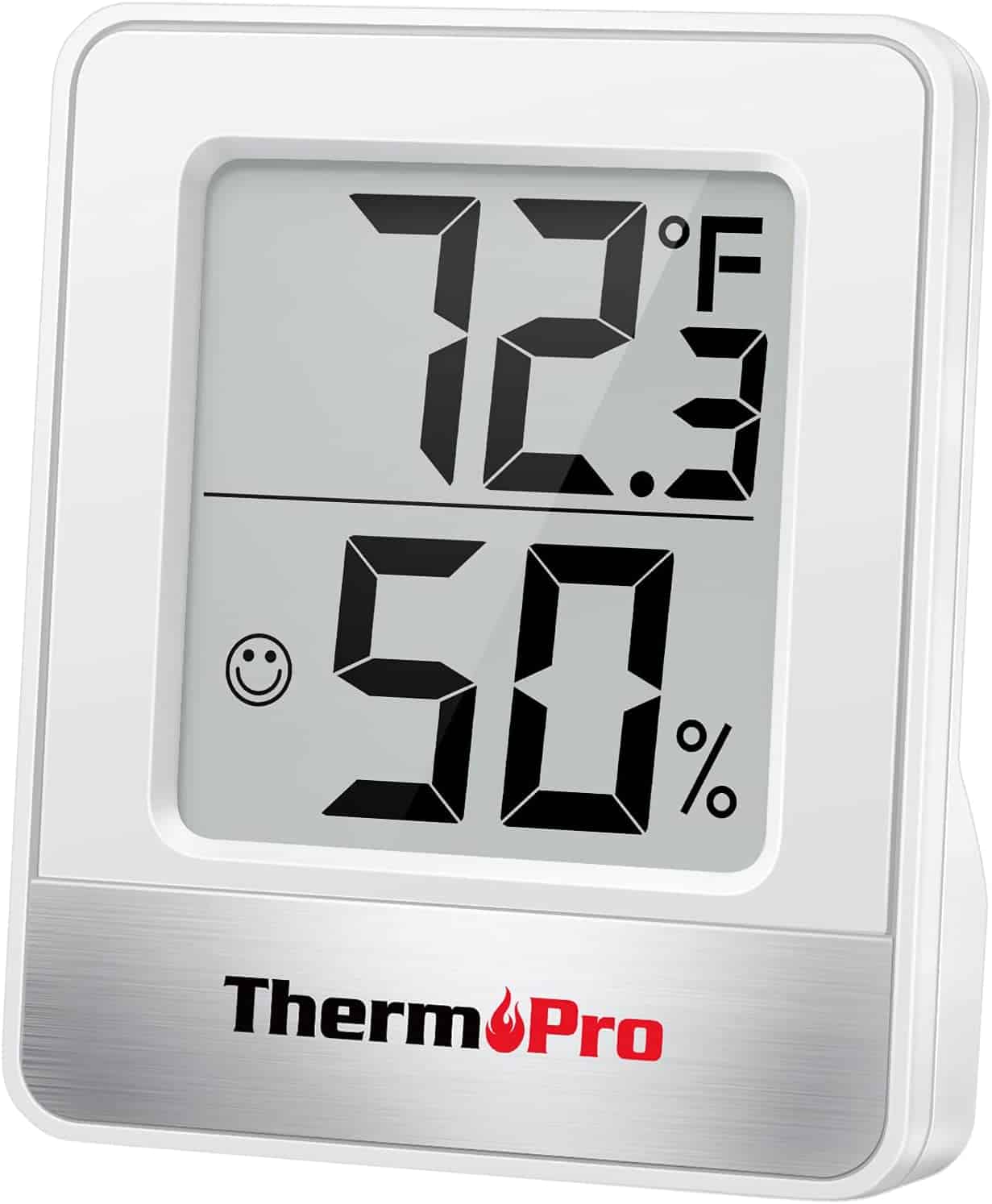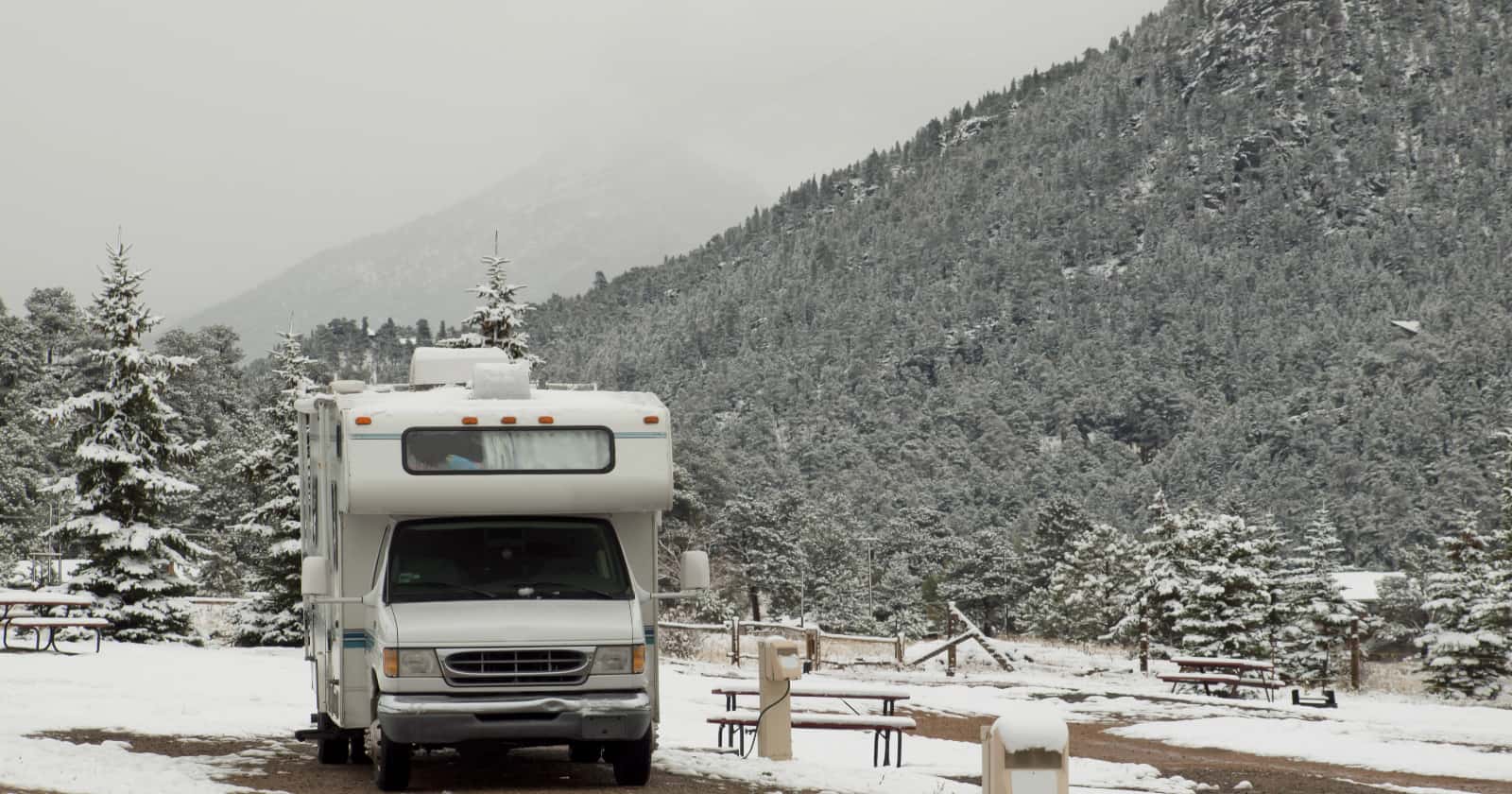Winter RVing can be a lot of fun. However, if you have ever spent time in your rig during the colder months, you may have noticed condensation dripping down your walls, windows, and cabinets. It can warp wood and cause quite a mold issue when left unchecked.
Let’s take a look at what condensation is, how it forms, and what you can do to prevent it on your winter RVing trips.
What is Condensation?
Condensation is water that was once suspended in the air in a gaseous state that has condensed into liquid on a surface. You’ll notice condensation on the outside of a soda can on a humid summer day, your cool windows in the winter, and your bathroom mirror after a shower. You can even easily create condensation using your breath on your glasses to clean them.
How Does Condensation Form
All of the above scenarios have a couple of things in common:
- You have a warm, humid environment or air
- The warm, humid air comes in contact with a much cooler surface
Water evaporates or turns into vapor at any temperature humans typically exist, albeit slower at colder temperatures. This means that the air around us is always getting water added to it somehow. Because warm air is less dense, it has a lot of room to hold water vapor in it while cold air doesn’t.
Once the air temperature gets cold enough, the water can no longer exist in a vapor state and condenses back into a liquid. This can be seen in nature as fog. Another condensation method happens when the air comes in contact with a much colder surface long enough to cool that surrounding air. This forces the water vapor to condense into a liquid onto that surface. The latter method is what causes condensation inside your RV in the wintertime.
How to Stop Condensation When Winter RVing
Even if the relative humidity outside is not all that high, those who go winter RVing can experience rather high humidity in their rig.
The reason the inside of your RV has a high relative humidity is twofold:
- One of the best ways to save money and energy is to button up your RV as much as possible and not allow hot air to escape or cold air to get in.
- Propane stoves, showers, bringing snow-covered or wet clothes inside to dry, and even breathing all add humidity to the air.
Since we heat our rigs to be comfortable, the warm air inside can hold way more water vapor than the outside air. When this warm and humid air comes in contact with the poorly insulated and cold walls or windows in the RV, the result is constantly fighting a wet and possibly moldy situation. So how do you prevent it?
Reduce the Humidity
If moisture in the air is causing the condensation, it’s a logical first step to get the moisture out of your RV. There are several methods of doing this and all have their advantages.
1. Open a Vent
The air outside being cold is typically less humid than the air inside, and your onboard RV propane furnace (if vented) blows warm, dry air. So when you crack or even completely open your roof vent, you create a natural flow that draws the warm moist air out, pulls the dry cold air in, and the furnace heats the dryer air.
Though this will reduce the relative humidity inside your RV, it isn’t the most energy-efficient means of doing so. That’s why the following methods are preferred.
2. Moisture Grabbers

They make many different types of moisture grabbers/absorbers on the market, but they all work pretty much the same way. A desiccant material that attracts moisture placed in a container soaks up excess moisture in the air to be deposited elsewhere, typically a bucket or a bag.
For small spaces like cupboards and closets, moisture grabbers can work well to keep the moisture down and reduce condensation in small areas. However, they typically work too slow or don’t absorb enough to dehumidify an entire RV.
3. Powered Dehumidifier
There are three types of electronic dehumidifiers on the market:
- Peltier (thermoelectric) dehumidifiers
- Refrigerant dehumidifiers
- Desiccant dehumidifiers.
Peltier (thermoelectric) dehumidifiers
Thermoelectric dehumidifiers like the Eva-Dry Petite Dehumidifier or the Ivation Mid-Size thermoelectric Intelligent Dehumidifier work by using the same type of thermoelectric module used in electric camping coolers.

In thermoelectric dehumidifiers, a heatsink or set of metal fins is attached to the cold side of a thermoelectric module. The water in warmer humid air condenses on the fins and drips into a collection tank, and the dry air is blown back into the room.
Pros:
- A great energy-efficient option
- Small, portable size is ideal for the RV setting
- Typically cheaper than other types of dehumidifiers
- Very quiet
Cons:
- While they are excellent options for small RV bathrooms, closets, and cabinets, many are not good for dehumidifying your entire RV
- Not ideal for colder locations below about 60°F
Refrigerant or Compressor Dehumidifiers
Rather than using an electric module to create a cold surface, this type of dehumidifier uses the same process that a residential refrigerator uses to cool a set of metal coils inside. They are larger than the thermoelectric kind and not as quiet—the hOmeLabs 1,500 Sq. Ft Energy Star Dehumidifier is a popular model for RVers.

A compressor-driven refrigeration system has a set of coils known as an evaporator (that gets cold) and a condenser (that is warm). To remove moisture from the air, the unit pulls damp air across the cold coils resulting in water condensing on said coils. The air then passes over the warm condenser side of the system resulting in warm, dry air blowing out of the machine.
Pros:
- Very fast at removing large amounts of moisture
- Best model for large spaces and regulating the humidity in 20+ foot RVs
Cons:
- Louder than other types of dehumidifiers
- Larger and heavier than thermoelectric
- Not ideal for colder locations below about 60°F
Desiccant Dehumidifiers
Like the moisture grabbers mentioned above, this type of dehumidifier, such as the Ivation 13-Pint Small-Area Desiccant Dehumidifier, uses highly efficient desiccant material to remove moisture from the air. This dehumidifier works best in colder environments from about 40°F to around 68°F. Therefore, they are ideal for those who either like to keep their RV colder than 68°F or store their RVs in cold, humid locations for the winter.

A desiccant dehumidifier pulls the air over a wheel filled with desiccant material. The desiccant absorbs the moisture from the air as the wheel slowly turns. The moisture-loaded part of the wheel gets heated, which removes the absorbed moisture. The extracted moisture drips into a tank while dry, warm air is blown out the other end.
Pros:
- Ideal for colder locations like stored RVs or RV basement compartments
- Very quiet
Cons:
- Not very efficient in air temps above 70°F
- Not that great for spring/summer or traditionally warmer humid locations (Florida, Southern Texas, etc.)
Which Method to Reduce Condensation is Right For You?
ProBreez has an excellent 13 Step Guide to Buying a Dehumidifier. However, if you plan to spend a lot of winter RVing time or live in your rig full-time, a compressor-type dehumidifier is probably the ideal choice to control humidity in your RV as a whole. For areas that are closed off like bathrooms, closets, and cabinets, it may help to place a smaller thermoelectric dehumidifier or moisture grabbers in those locations.
What is The Ideal Humidity in an RV?
Getting rid of excess humidity in your RV is very important, however, it is possible to overdo it. Humid air can increase condensation and mold, but dry air below 30% relative humidity can cause dry skin and even increase respiratory problems for some.
Indoor relative humidity (RH) should be kept below 60 percent — ideally between 30 percent and 50 percent, if possible. Low humidity may also discourage pests (such as cockroaches) and dust mites.
EPA
Monitor Your Humidity Levels With a Digital Hygrometer

Larger dehumidifiers typically have a built-in hygrometer that tells you the room’s humidity level. But inexpensive digital hygrometers can be placed in closets or cabinets to ensure that those locations are kept sufficiently dry to avoid condensation or mold.
Keep The Air Moving
You remove or prevent “fogging up” or condensation from the windows in your car by turning on your heater so that it blows warm air quickly over your windshield. This works because you are moving the hot air over the window (colder surface) fast enough so that the air touching the surface stays warm and doesn’t have a chance to condense.
You can use this same method for problem windows or surfaces in your RV. In the winter, you no doubt will be heating your rig, so you already have a source of warm air. Next, all you have to do is direct a fan at that window to keep that warm air from contacting the window long enough to create condensation. As a bonus, fans will also help heat your RV more evenly.
Keep Cabinets Open
Finally, dead air spaces such as those in closets and cabinets are prone to condensation due to the lack of airflow. If you notice issues in these locations, try keeping the cabinet doors and closets open. This will allow those spaces to be heated and increase airflow in them.
Has condensation been an issue in your RV? What method do you use to keep moisture and condensation at bay while you’re enjoying traveling? Tell us below in the comments.





Very informative! Thanks!
One of he worst offenders is by people who use Buddy Heaters or similar unvented heaters. Our RV furnaces are vented so much less moisture. I would rather pay for the extra propane used by my furnace than deal with the moisture output of unvented heaters. Plus, the furnaces have a thermostat so kept comfortable all the time. Portable heaters are either too hot or too cold.
I have a travel star travel trailer the bedroom opens up to the outside heavy condensation on the. Inside up on the ceiling of the canvas in the two bed room s how do I fix it plz help me if you know what I can do
In the article you say “One of the best ways to save money and energy is to button up your RV as much as possible and not allow hot air to escape or cold air to get in”.
Then later in the article you say just the opposite “The air outside being cold is typically less humid than the air inside, and your onboard RV propane furnace (if vented) blows warm, dry air. So when you crack or even completely open your roof vent, you create a natural flow that draws the warm moist air out, pulls the dry cold air in, and the furnace heats the dryer air”.
The furnace will pull much less cold air in, if any, than the vent expels. The warm humid air will rise to the highest point and keep most of the cold air from entering. The furnace may run more often since you are losing warm air out the vent.